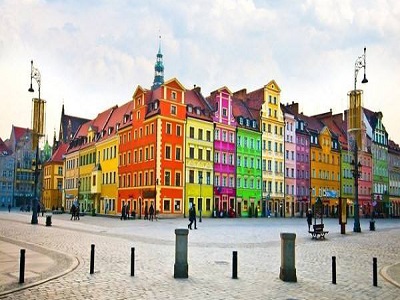Date:2019-04-10
Hopes for reasonable long-term healthy growth in demand in the European coatings industry appear to have been dashed, with a continued slowdown forecast for 2019 and, in the view of some economists, even a recession after that.
The main sectors affected by the recession were the construction industry, the automobile industry, etc., some of which were caused by unstable capital investment and machinery.
One bright spot is that raw material prices should fall after higher costs, providing an opportunity to improve margins.
From the gradual recovery from the financial crisis in 2008, the economic growth of the whole Europe peaked, to the first signs of a slowdown in 2018, and a broader pan-european recession will occur after 2019.

The major western European economies of Germany, France, Italy and Britain are weakening.
The UK could be affected by brexit this year, when it leaves the eu in March, as well as its main eu trading partners in northern Europe. In fact, in 2018, the UK economy has shown signs of a brexit-induced economic slowdown, which has also affected the demand of the coating market.
According to the brussels-based executive commission, the average GDP growth rate of the 28 eu member states, including the UK, rose to 2.1% in 2018 from 2.4% in 2017.
The 27 eu states, minus Britain, fell from 2.6% to 2.2%. The commission expects this to fall further, to 2% this year and to 1.9% by 2020. Growth in the eu's eastern European countries should remain relatively healthy, but will still be down from 2018.
"External and internal uncertainties and risks are rising and starting to have an impact on the pace of economic activity." Valdis Dombrovskis, vice-president of the commission, explains. External factors include the impact of European exports on global trade tensions.
These were cited by the European chemical industry council, whose economic analysis covers the paint industry, as a factor contributing to a 0.5% drop in chemical production in 2018. The key customer sector, the automotive industry, was hit by falling export demand, and the overall recovery is expected to rise a modest 0.5% in 2019.
However, these growth forecasts may turn out to be overly optimistic. In mid-december 2018, IHS Markit's 19-country eurozone purchasing managers' index showed an unexpectedly sharp decline in economic activity. Purchasing managers' indices for the euro area have fallen to their lowest level in four years, according to a london-based consultancy.
Purchasing managers' indices for Germany, the big European economies and the big coatings industry fell by 7% in the second half of 2018. According to the European commission, Germany's GDP fell from 2.2 percent in 2017 to 1.7 percent last year (2018), and is expected to rise slightly to 1.8 percent in 2019.
The German chemical industry association (VCI) predicts that chemical and pharmaceutical production will grow 1.5 percent this year and 2.5 percent in 2018.
Last year's growth was driven by pharmaceuticals, with production of polymers, petrochemicals and consumer and personal-care chemicals down 2% to 3% and coatings down about 1%.
The IHS Markit purchasing managers' index for German construction fell * in October but then returned to moderate growth in November. Most of the growth in construction activity in the country has been in the commercial and housing markets, with civil engineering stagnating for more than a year. According to IHS Markit, German construction growth is now well below what it was before this year and in 2017.
Meanwhile, German car sales and production, already under pressure from trade conflicts in export markets outside Europe, began falling sharply in the autumn of 2018 as Europe introduced tougher emissions tests that showed cars were less fuel efficient than previously thought. German car sales fell by 10% in November alone.
"The slowdown in the auto industry and the low growth in construction have had a major impact on our industry." Christoph Maier, head of economic and financial affairs at Frankfurt's German paint and printing association (VdL).
Christoph Maier added: "we believe that even in 2019, the car industry will not fully recover and growth in the construction industry will remain weak. The projected figure for 2019 is similar to that for 2018, with production likely to shrink again by about 1 percent and sales up by about 1 percent."
In 2019, the two worst performers in Western Europe will be Italy and Britain, with the European commission forecasting GDP growth of 1.2% for each country. But without an exit deal with the eu, brexit would suffer badly, which would mean it would have to restore basic trade rules to the world trade organisation and its European neighbours.
The UK coatings industry is worried about the trade impact of brexit on the remaining 27 eu member states, which account for the majority of export sales and raw material imports, but would be even more anxious without an exit agreement on the UK's eu trade relationship.
Ellen Daniels, head of public affairs and policy at the British coatings federation, explained: "if there is no brexit deal, there could be customs delays, tariffs and potential problems with the transport of goods and [access to eu] skilled workers. There could be major supply chain disruptions. For immediate industries like paint, this can lead to inventory and potential business losses."
Some of the major sectors of the UK coatings industry, such as cars and their components, rely on just-in-time supply chains that may no longer be able to operate in the UK as brexit will remove open UK eu borders.
The exception may be Ireland, which has an open border between eu members and Northern Ireland (part of the UK), but even that is threatened, especially in the case of "no deal".
The eu economy is so interdependent that an event like brexit, let alone a recession. Especially in a wide range of industries such as coatings, in Europe inevitably reverberated.